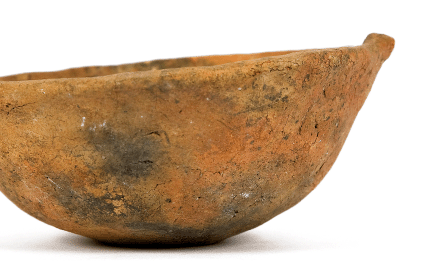
The Department of the Neolithic Age
The collection of the Department of the Neolithic Age includes chronologically a period from the middle of 5 000. BC to the beginning of 2 000. BC. The collection belongs to the largest collections of the Museum. This is the result of the research work of many generations of archaeologists. Territorially they come from Poland and neighboring countries. The main part of the collection comes from Mazovia, Świętokrzyski region , Małopolska and Ukraine. These are the areas where the site activities of the Warsaw archaeologists were particularly focused. The most famous collections of artifacts are the materials from Ćmielów and Gródek Nadbużny - the most important Neolithic sites of the settlements of the population of Funnelbeaker Culture, Krzemionki Opatowskie - priceless complex of mining of striped flint (Monument of the History of Poland, object entered on the World List of Industrial Heritage), Rybników from Puszcza Knyszyńska (Knyszyński Forest) - the region of mining flint from the Bronze Age and early Iron Age, the Złota Sandomierska - cemeteries dating back to the Neolithic Age and early Bronze Age, Stryczowice - settlements, flat cemetery and megalithic tombs cemetery, Ciemna (Ojcowska) cave - phase of settlement of the first farmers and Popudnia and Pieniążkowa - Ukrainian sites from the Early Stone Age.
The main source of the collections of the Department of the Neolithic Age of PMA is own excavation works, which are an essential element of research programs.
One of such major scientific projects deals with the issues of prehistoric flint mining, in which a special team of the archaeologists specialized within the Department. The result of the work of the team, focused on the sites in Krzemionki Opatowskie and Rybniki, was exploration of broad issues involving mining of the raw materials, their processing, settlements around mines, distribution of products. As a result of many excavation campaigns, numerous flint workshops were examined, and rich collections of artifacts were acquired, which are the basis of important scientific studies.
Another important project implemented by the Department of the Neolithic Age of PMA having an impact on the expansion of the collection relates to funeral rites of the Neolithic Age and Early Bronze Age communities in Wyżyna Sandomiersko - Opatowska (Sandomierz - Opatow Upland). Within this project were examined the burial sites in Mierzanowice and Wojciechowice and in recent years, a complex of cemeteries - flat and megalithic in Stryczowice. Excavated sites and the artifacts discovered there - ceramics, flint, stone and bone are among the most important in the analysis of rituals in the Early Stone Age and Early Bronze Age in the territory of Poland.
Another priority scientific program also associated with the expansion of the collection relates to the Early Stone Age in the Mazovia region, and within this program the excavation works were carried out in Kownacica.